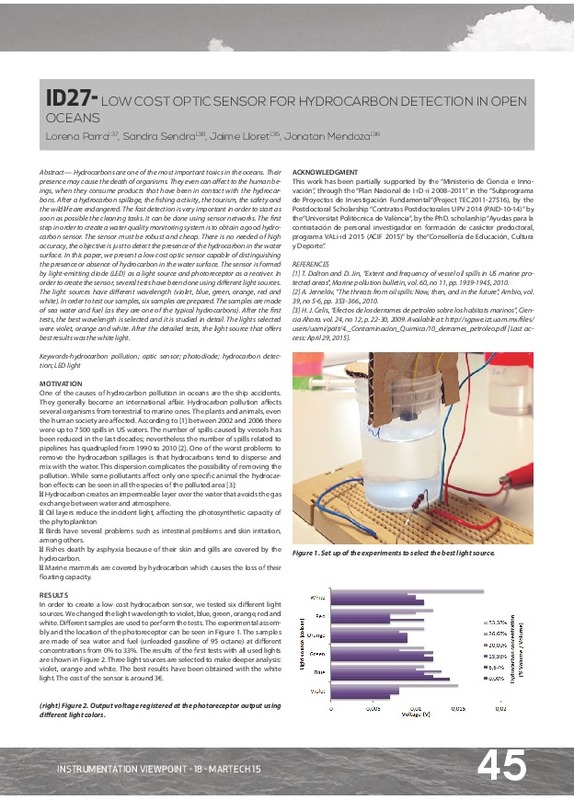JavaScript is disabled for your browser. Some features of this site may not work without it.
Buscar en RiuNet
Listar
Mi cuenta
Estadísticas
Ayuda RiuNet
Admin. UPV
Low cost optic sensor for hydrocarbon detection in open oceans
Mostrar el registro completo del ítem
Parra Boronat, L.; Sendra, S.; Lloret, J.; Mendoza, J. (2015). Low cost optic sensor for hydrocarbon detection in open oceans. Instrumentation Viewpoint. 18. http://hdl.handle.net/10251/64817
Por favor, use este identificador para citar o enlazar este ítem: http://hdl.handle.net/10251/64817
Ficheros en el ítem
Metadatos del ítem
| Título: | Low cost optic sensor for hydrocarbon detection in open oceans | |
| Autor: | Mendoza, Jonatan | |
| Entidad UPV: |
|
|
| Fecha difusión: |
|
|
| Resumen: |
[EN] Hydrocarbons are one of the most important toxics in the oceans. Their
presence may cause the death of organisms. They even can affect to the human beings,
when they consume products that have been in contact with ...[+]
|
|
| Palabras clave: |
|
|
| Derechos de uso: | Reconocimiento - No comercial - Sin obra derivada (by-nc-nd) | |
| Fuente: |
|
|
| Editorial: |
|
|
| Versión del editor: | https://upcommons.upc.edu/handle/2117/77614 | |
| Código del Proyecto: |
|
|
| Agradecimientos: |
This work has been partially supported by the “Ministerio de Ciencia e Innovación”, through the “Plan Nacional de I+D+i 2008–2011” in the “Subprograma de Proyectos de Investigación Fundamental”(Project TEC2011-27516), by ...[+]
|
|
| Tipo: |
|







